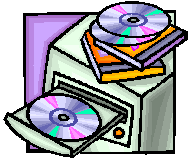
Encyclopedias

While an almanac is a good source for quick facts, an encyclopedia is the source for more detailed information. A general encyclopedia gathers information from all branches of knowledge and arranges it alphabetically for ready reference. The purpose of an encyclopedia article is to give an overview of a subject; an article's bibliography will provide the user with further sources of information. If possible, a library will want to have more than one encyclopedia in its collection and will replace them in alternate years.
When consulting an encyclopedia, remember to search the index as well as the alphabetically arranged articles which make up the text. Much information embedded in articles can be found only by using the index. When evaluating an encyclopedia, check entries to determine currency of content; a recent publication date will not guarantee the content is up-to-date. Authority - the qualifications of the contributors and editors, and the reputation of the publisher - is also important to consider. World Book, Britannica, Americana, Grolier, and Funk & Wagnalls are a few of the well-known and respected names associated with encyclopedias. Most encyclopedias are available in one, two or three of the following formats: print, CD- or DVD-ROM, and online. Electronic versions often include dictionaries, thesauri, almanacs and/or atlases.
The New Encyclopaedia Britannica. 15th ed. 32 volumes.
Encyclopaedia Britannica, Inc., 2002.
Britannica is the oldest, most scholarly, and best known of all general encyclopedias.
A 12-volume Micropaedia has ready reference information, while the remainder
of the set, the Macropaedia, offers detailed articles in alphabetical order.
Britannica is also available in a variety of electronic formats. The
Britannica Ultimate Reference Suite, in both DVD- and CD-ROM, offers reference
tools for all age and reading levels, including three encyclopedias, Merriam-Webster
dictionaries and thesauri, atlases, and timelines. The online version at:
http://www.eb.com is no longer free; the cost varies
according to institution.
Encyclopedia Americana. 30 volumes. Grolier.
Suitable for junior and senior high school students as well as adults, the Encyclopedia
Americana contains 45,000 articles in all academic fields and curriculum topics.
Both the print and CD-ROM versions are updated annually, and the Web version, which
is at: http://go.grolier.com
for
a fee, is updated quarterly on a selective basis. The electronic formats are
less expensive than the print edition but have fewer maps and photographs.
World Book Encyclopedia. 22 volumes. World Book.
Always a favorite of librarians because of its simple, clear explanations, World
Book is appropriate for the elementary grades through high school, for general
use in the home, and in nearly all types of libraries. It contains more than
17,000 signed articles and numerous cross-references; the last volume has a research
guide and detailed index. World Book is known for extensive color illustrations,
and for its clear organization and logical arrangement of subject matter.
The CD-ROM version includes animation and audio and video clips. It is also
online for a fee at: http://www.worldbookonline.com
.

Encarta. Microsoft.
At this time there are three Encarta encyclopedia products on CD-ROM.
The Encarta Reference Library (also on DVD) offers articles, illustrations,
sound clips, and Web links in nine standard reference tools including an encyclopedia,
atlas, dictionary, thesaurus, and more. The other two encyclopedia products,
Encarta Encyclopedia Deluxe and Encarta Encyclopedia Standard, are
abridged versions of the Reference Library. Go to:
http://encarta.msn.com/ for more
information about each.
In addition to multi-volume sets, there are also several good one-volume encyclopedias that are useful for most library collections.
New Columbia Encyclopedia. 6th ed. Columbia University Press,
2000.
The New Columbia is generally considered the best of the one-volume encyclopedias.
With a long and respectable history, it is written for adults but accessible to
high school students. The print edition is an oversize work - nearly 12 pounds
- with a page layout in three columns and many black and white photographs.
It contains an impressive amount of information augmented by helpful bibliographies
for its longer articles. The New Columbia Encyclopedia is also available
at: http://www.bartleby.com. The
Concise Columbia Encyclopedia is a condensed version available at a lower price.
Cambridge Encyclopedia. 4th ed. Cambridge University Press,
2000.
Although published in Great Britain, this one-volume encyclopedia has an international
approach and is appropriate for adult users. A 24-page color atlas precedes
the main section of nearly 40,000 entries. An abridged version, Cambridge
Paperback Encyclopedia is also available.
Several encyclopedias are available through the LiLI databases: EBSCO offers Funk & Wagnalls New World Encyclopedia and the Columbia Encyclopedia, while Britannica Intermediate Encyclopedia is accessible via eLibrary.
Click the arrow below to continue to the next page